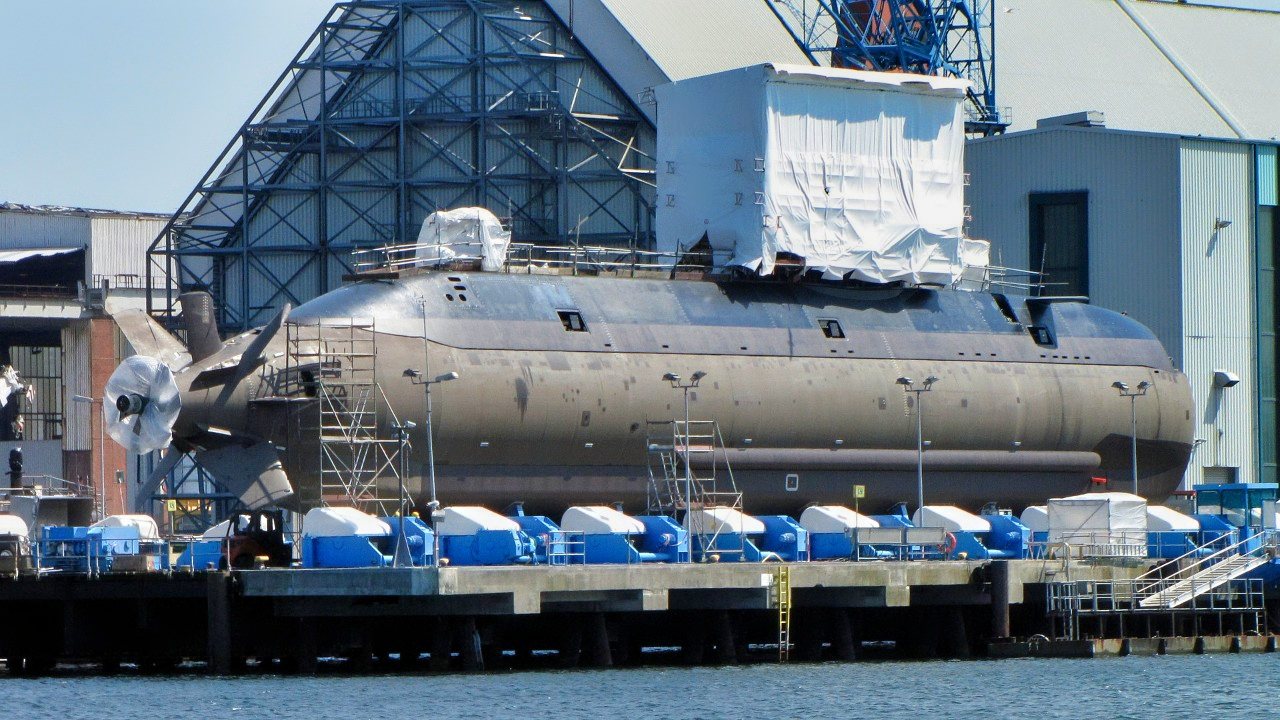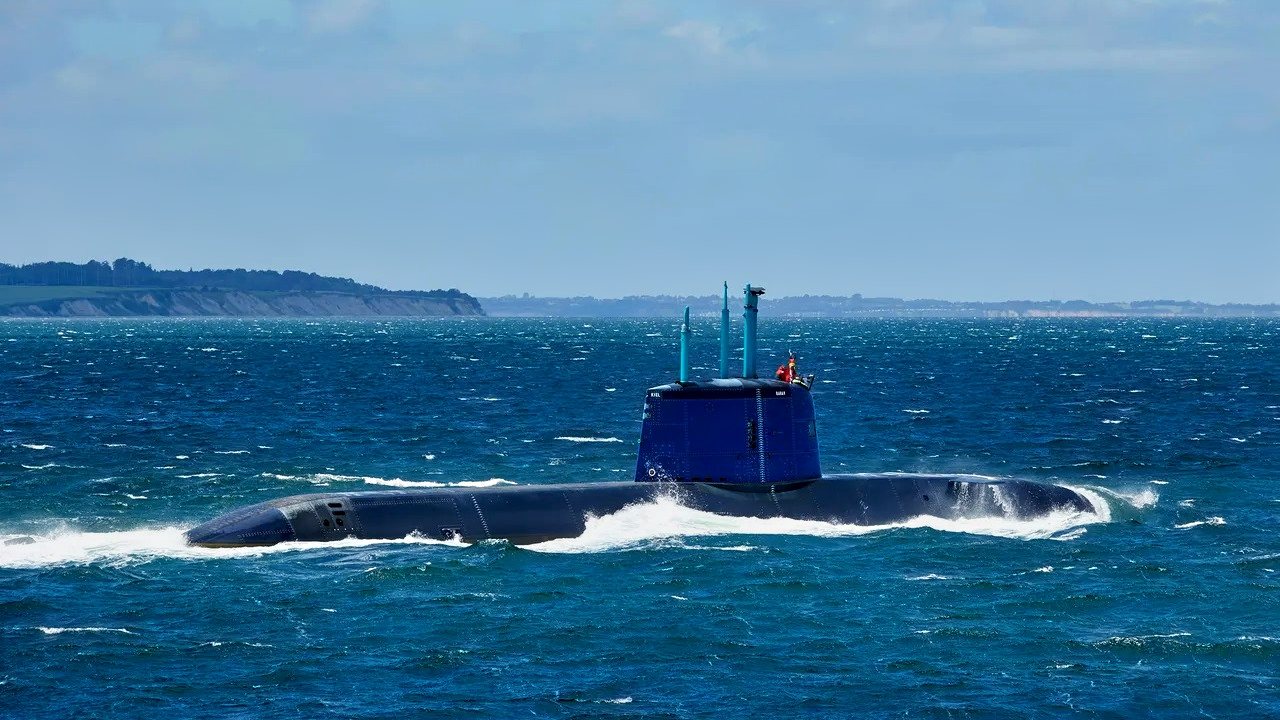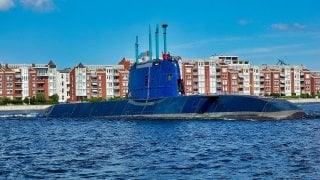Dolphin-Class Submarine: Israel’s Unofficial Nuclear Weapons Platform
A remarkably small diesel-fueled submarine built by the German firm Howaldtswerke-Deutsche Werft (HDW), the Dolphin-class submarine is Israel’s ace-in-the-hole in terms of its nuclear weapons capability.
A remarkably small diesel-fueled submarine built by the German firm Howaldtswerke-Deutsche Werft (HDW), the Dolphin-class submarine is Israel’s ace-in-the-hole in terms of its nuclear weapons capability.
One normally doesn’t think of tiny, old diesel-fueled submarines as being an “ace-in-the-hole” technology but that is precisely what Israel’s Dolphin-class subs are because these ultra-quiet submarines have been outfitted by the industrious Israelis with nuclear cruise missiles.
Israel’s Nuclear Dyad
So, while not as powerful as an American or Russian ballistic nuclear missile submarine, the Dolphin-class affords Israel with an essential second-strike capability that it otherwise would lack.
Thanks to the Dolphin-class submarine, Israel’s military now has a nuclear dyad (land and sea nuclear-launch capability).
The Israelis have never acknowledged that they procured these tiny, diesel-powered submarines for the purpose of launching nuclear-capable cruise missiles.
In fact, Israel’s government has yet to acknowledge the existence of a nuclear weapons program at all.
But this was essentially confirmed in 2000, when the US Navy observed Israeli missile tests in the Indian Ocean. During those Israeli military exercises, the Dolphin-class submarines had been outfitted with nuclear-tipped cruise missiles.
There is some debate among nuclear weapons experts as to whether Israeli’s military adapted the US-built Harpoon anti-ship missile to carry nuclear warheads or if they converted the Gabriel 4LR anti-ship missile.
Although, it is believed that the nuclear-tipped cruise missile Israel is using is the Popeye Turbo cruise missile (a variant of the Popeye anti-ship missile).
None of these experts, however, dispute the fact that Israel has a submarine-launched nuclear weapons capability.
A Flotilla of Dolphins
Israel has a flotilla of five Dolphin-class submarines that have four torpedo tubes that are also capable of launching nuclear-tipped cruise missiles. These boats are small, can operate in relatively shallow and close littoral waters off the coast of a rival country like, say the waters of the Strait of Hormuz off Iran’s coast, and these boats are fairly quiet.
That means these platforms can lurk near Iran’s shores, surface, pop off their payloads together, and do some severe damage to Iranian targets. These units were deployed off the coast of Iran in 2010 in response to ballistic missile threats emanating from the Iranian-backed Syrian regime and Iran-backed Hezbollah in Lebanon.
From that point on, as the Arab Spring (in fact, an Islamist Winter) erupted and eventually initiated the Syrian Civil War, Israel decided to permanently station at least one of their Dolphin-class submarines in the Persian Gulf.
Israel’s Submarine-Based Nukes
It is believed that each cruise missile is armed with a 200-kiloton nuclear warhead.
A 200-kiloton nuclear blast lasts for 2.2 seconds. The fireball radius for such a weapon is about one mile wide. The heavy blast damage radius is around three miles wide from the detonation point of a 200-kiloton nuke.
The radiation radius for such a weapon is nearly eight miles wide from the detonation point. Moderate blast damage will be experienced just shy of 14 miles away from the detonation point. Thermal radiation damage will be endured at around 54 miles outside the detonation point. And light blast damage from an Israeli 200-kiloton nuke will be felt at around 92 miles away from the detonation point.
Beyond the nuclear-tipped cruise missiles that the Dolphin-class can fire, there are an assortment of other features that make this submarine dangerous to Israel’s foes. There are two models of the Dolphin-class.
The Dolphin I-class displaces 1,640 tons when cruising on the surface and 1,900 tons while submerged. The Dolphin II is slightly larger and displaces 2,050 tons while surfaced and 2,400 tons underwater.
Other Features of the Dolphin-class
The Dolphin I-class has a maximum speed of 20 knots (23 mph) and the Dolphin II-class has a maximum speed of over 25 knots (28 mph or more).
Dolphin I-class submarines are powered by three MTU 16V 396 SE 84 diesel engines whereas the Dolphin II is powered by the same kind of diesel engine that its predecessor is, but it also has a sophisticated air independent propulsion (AIP) system that helps the Dolphin II stay under the waves longer than the Dolphin I.
Besides the nuclear-tipped cruise missiles, Dolphins are armed with 16 torpedoes. These torpedoes come in 533 mm size or the larger 650 mm size. The submarines can deploy mines and even Israeli special forces or Mossad units.

The Dolphin-class is a lethal system and Israel has started procuring more. It is a smart and cost-effective complement to the Israeli land-based nuclear arsenal.
What’s more, it is a continual reminder of just how serious Israel is about countering its regional foes and preserving its national survival—which has always been under threat since the Jewish state of Israel was first declared in 1947.

About the Author
Brandon J. Weichert, a National Interest national security analyst, is a former Congressional staffer and geopolitical analyst who is a contributor at The Washington Times, the Asia Times, and The-Pipeline. He is the author of Winning Space: How America Remains a Superpower, Biohacked: China’s Race to Control Life, and The Shadow War: Iran’s Quest for Supremacy. His next book, A Disaster of Our Own Making: How the West Lost Ukraine, is due October 22 from Encounter Books. Weichert can be followed via Twitter @WeTheBrandon.
Image Credit: Creative Commons.


